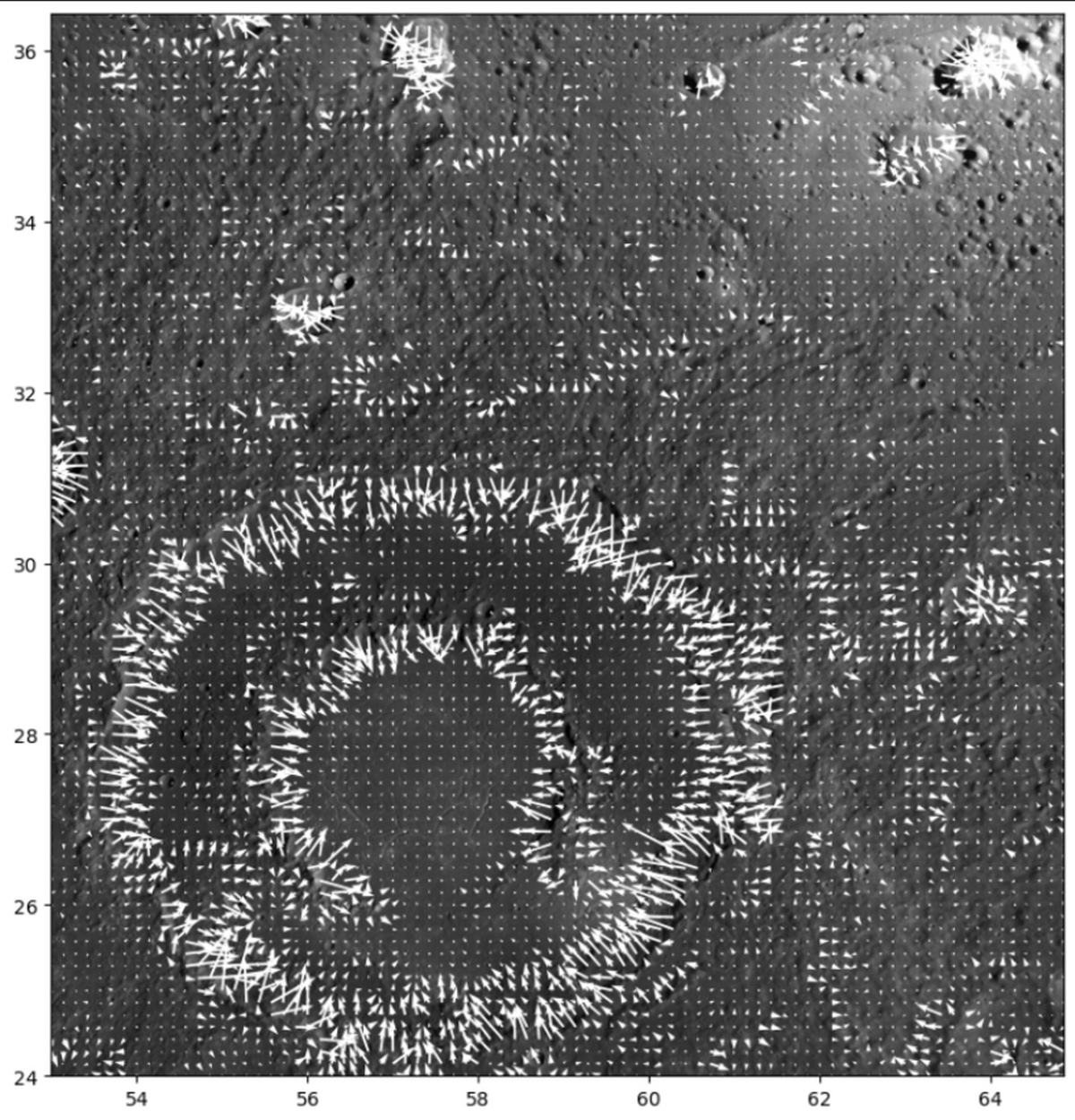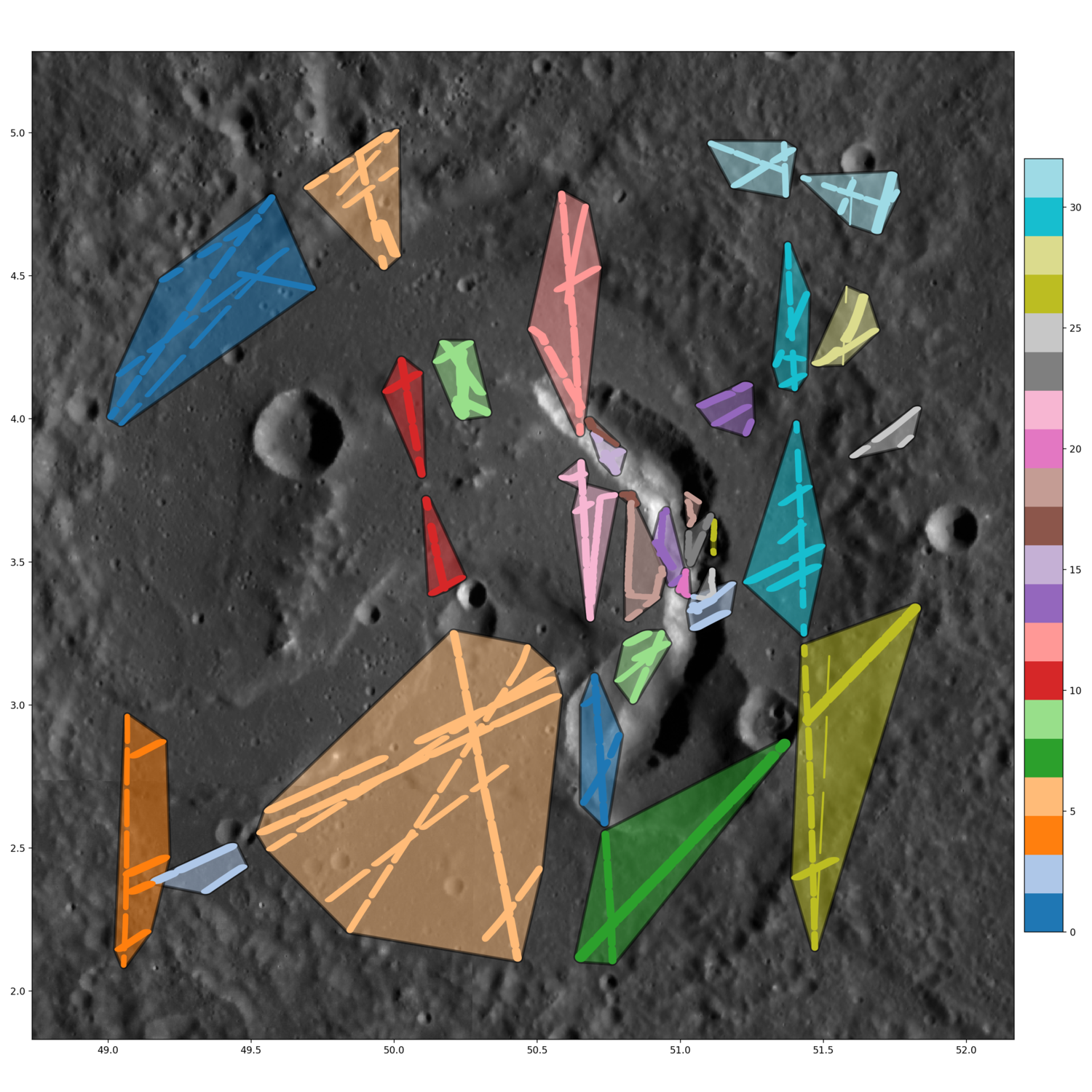Updates on MASCS geometric calculation & Unsupervised observation clustering for photometric correction
- 1DLR, Planetary Research, Berlin, Germany (mario.damore@dlr.de)
- *A full list of authors appears at the end of the abstract
The MASCS instrument was an essential part of the NASA MESSENGER mission that orbited the planet Mercury between 2011 and 2015.
The Visible-Infrared Spectrograph (VIRS) channels cover the visible (300–1050 nm) and near-infrared (850–1450 nm) ranges.
We recomputed MASCS geometries using the NAIF SPICE toolkit's Python implementation spiceypy.
While the MASCS PDS calibrated data records (CDR) contained some geometrical information, certain key parameters (such as local time) were missing.
Local time serves as a useful proxy for surface temperature due to Mercury's slow rotation.
A detailed digital elevation model (DTM) of the entire planet was not available, so Mercury shape was approximated as an ellipsoid.
We updated this approximation with the DTM from MESSENGER/Mercury Laser Altimeter (MLA).
We also included the calculation of each measurement normal direction, projected on the surface and it's angle with the local north direction. (Fig.1)l
Leveraging the updated measurements, we developed a machine learning method to automatically select similar observations for photometric correction.

Fig.1
We extracted MDIS mosaic and DTM pixel data under each individual MASCS field of view (FOV) as proxies for geomorphological units and sub-pixel roughness.
To cluster similar observations, we applied HDBSCAN, an algorithm that extends DBSCAN by creating a hierarchical clustering structure and extracting a flat clustering based on cluster stability. (fig.2)

fig.2
Anna Galiano (team leader), Océane Barraud, Sebastien Besse, Cristian Carli, Mario D’Amore, Ariel Deutsch, Deborah Domingue, Valetina Galluzzi, Lauren Jozwiak, Alessandro Maturilli, Antti Penttilä, Salvatore Buoninfante, Giovanni Munaretto, Gianrico Filacchione, David Rothery.
How to cite: D'Amore, M. and the ISSI Group on Mercury Pyroclastic Deposits (ID#552): Updates on MASCS geometric calculation & Unsupervised observation clustering for photometric correction, Europlanet Science Congress 2024, Berlin, Germany, 8–13 Sep 2024, EPSC2024-195, https://doi.org/10.5194/epsc2024-195, 2024.